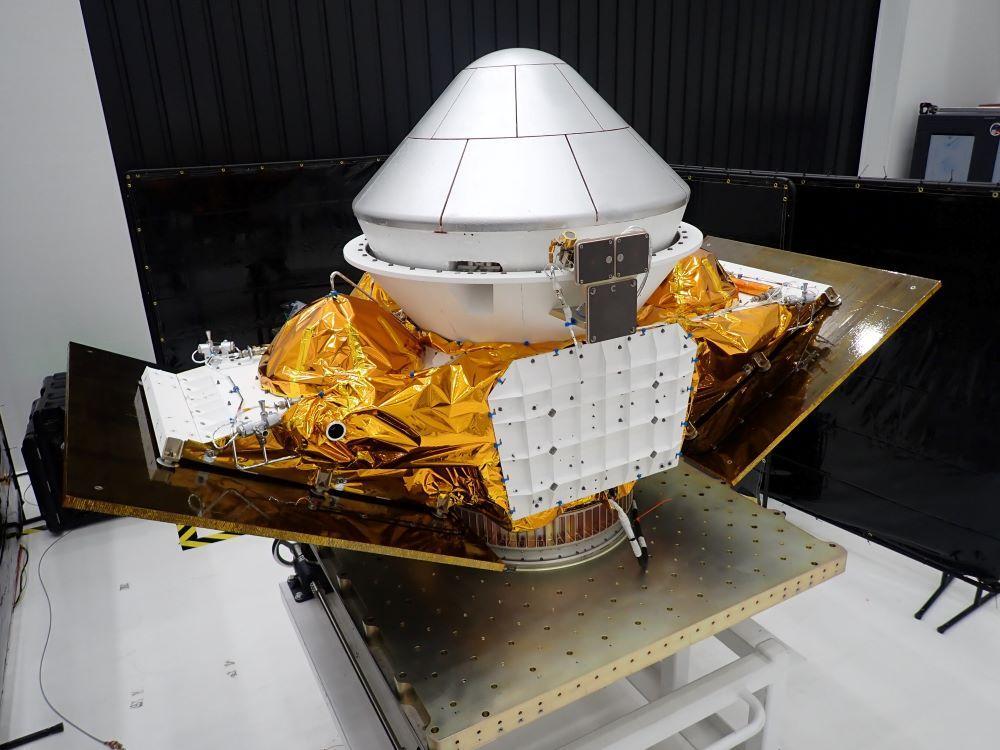27.06.2025

Varda Space can now gain reentry of its W-Series capsules through the Earth's atmosphere as often as it wants using new permission from the FAA.
In 2023, the first time Varda Space sent its capsule into space, it did not have permission to come back.
Its spacecraft spent eight months orbiting Earth before receiving reentry authorization and safely touching down at the Utah Test and Training Range in 2024.
But it is 2025 now, and Varda has three successful capsule reentries under its belt and new permission from the FAA to return its spacecraft through the atmosphere as often as it wants. On June 18, the FAA issued an expanded part 450 reentry license to Varda Space for its Winnebago–or W-Series–capsules. The precedent-setting regulatory approval has the potential to help expand the nascent in-space manufacturing and research and development industry.
“The FAA has authorized Varda Space to conduct multiple operations of its Winnebago reentry capsule until its current license expires in 2029,” the regulator said in a general notice. “Enabling as many missions as an operator wants, under one license, is a key streamlining element of the Part 450 commercial space launch and reentry licensing rule.”
The FAA maintains safety oversight of each reentry operation and Varda must provide it with accurate license updates.
However, “provided Varda operates under the authorized mission profile and vehicle design, it will no longer need to apply for mission-by-mission license approvals,” the regulator says. “The FAA can focus more on the licensing needs of other launch and reentry operators and bring on new entrants.”
For prior missions, regulatory reviews took roughly three months per mission, says Rebecca Kowalczyk, Varda’s mission assurance and regulatory lead.
Using Part 450, Varda Space just launched its W-4 capsule on the SpaceX Falcon 9 Transporter-14 rideshare mission on June 23. The company has flights scheduled through next year and has not yet increased its cadence, Kowalczyk says.
“However, under the reentry operator license, Varda would have the capability to launch multiple spacecraft per rideshare mission,” she says. “We are booked on every Transporter launch through 2026.”
At the moment, there are few spacecraft that can return goods or experiments from space, apart from SpaceX’s Dragon capsule or limited capacity within Russia’s Soyuz capsule, which can transport cargo back to Earth from the International Space Station.
Varda Space’s systems have often been used for pharmaceutical processing in microgravity. For example, on its W-4 mission the company says it will attempt to make “small molecule crystals using a fluid-based expanded architecture.”
“Solution-based crystallization is a common way for laboratories on Earth to control particle size and polymorphism of small molecule drugs, and this capability adds to the growing tool set available to pharmaceutical researchers in microgravity,” Varda Space says. The process would crystallize a proprietary molecule, it adds.
The company says it is committed to its core competence of space-based life sciences work. But the defense sector is showing interest too.
Varda Space’s W-3 mission was funded through the Prometheus program, an Air Force Research Laboratory initiative to speed up testing of hypersonic systems and reentry technologies. The W-3 capsule, which landed in May, carried an advanced inertial measurement unit for testing at reentry speeds. Varda said reentry speeds exceeded Mach 25.
A potentially higher launch and reentry cadence means more revenue for Varda Space, but also quicker iteration for researchers testing in microgravity or during high-speed reentry.
“Future missions will carry any combination of pharmaceutical processing, microgravity manufacturing or testing, or hypersonic research payloads,” Kowalczyk said.
Quelle: AVIATION WEEK
